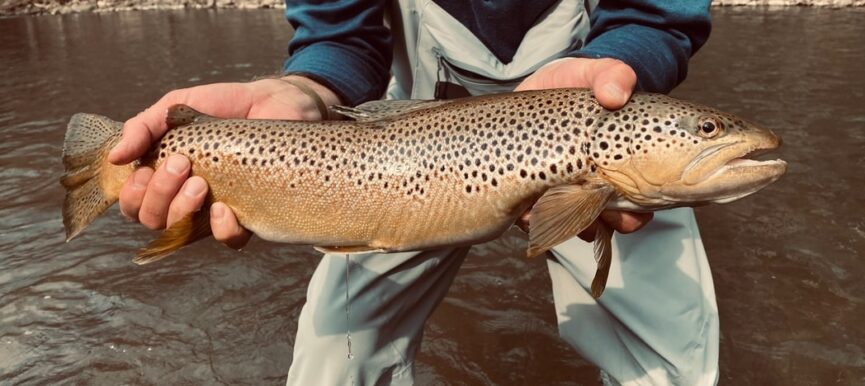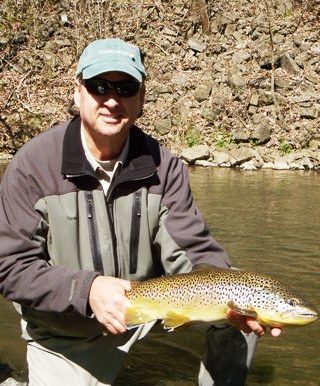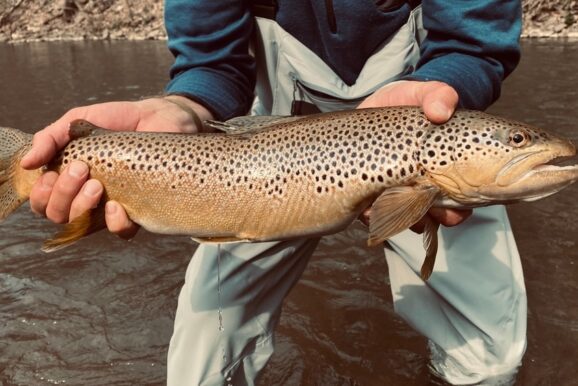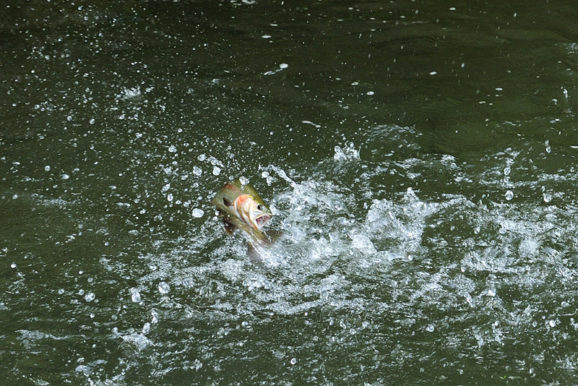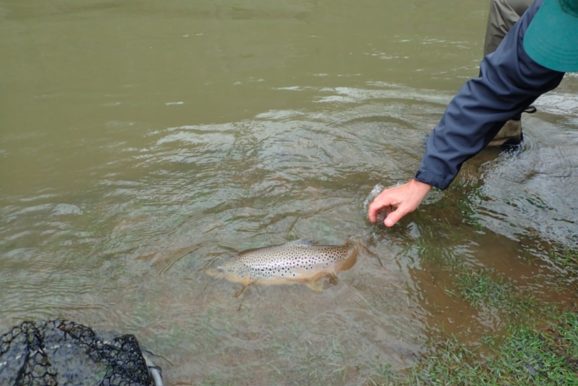Being able to look at a section of water and tie a nymph rig to effectively cover the water in a way that fish will eat your fly is part science and part art that takes a lot of experience to master. A major reason that nymphing is such an effective method to catch fish on a fly rod is having the ability to present your fly in the area that most of the fish are eating, at most of the time.
Since fish eat on the bottom most of the time, nymph rigs that drift flies near the bottom tend to catch more fish. Experienced anglers have a knack for tying rigs that allow flies to drift near the bottom. Too much weight and you’re stuck on the bottom for that cast, but not enough weight and the flies don’t spend enough time on the bottom where the fish are.
The amount of weight is one variable often considered, for obvious reasons. However, another variable that determines how deep a nymph rig will drift is how the amount of weight is distributed on the line. Weight placement on two nymph rigs can be an overlooked variable that experienced anglers will consider when making depth adjustments to catch more fish.
So where do you place the weight on a two nymph rig? Well…
Above the Two Flies
I find myself putting weight above the flies most often, especially because a lot of the nymphs I fish usually have some form of weight incorporated in them. For example, bead head nymphs or lead wire underbodies. Adding weight to the two nymph rig above the flies works well when you want to get the flies rolling along the bottom in medium to slow currents with average depths. This can be very effective, and matches very well to many of our water types on Spruce Creek and Yellow Creek.
Between the Two Flies
When fishing a deep, fast current where getting flies down to the bottom immediately is vital, placing weight between a two nymph rig can help get them down to the fish quickly. However, it’s important to note that I tend to avoid weight placed in the middle of two fly nymph rigs if possible due to it having a tendency to create extra tangles. For me, adding weight between the flies is usually a situational adjustment when fishing fast deep riffles, pocket water, or drastic depth changes. Penns Creek, even though it’s a smaller stream, has drastic depth changes that bode well for adding extra weight between the flies.
Above and Between the Two Flies
A little weight above the flies, and a little weight between the flies. This can be a great way to tie rigs to cover water with a variety of depths and current speeds. For example, this can be a great way to tie nymph rigs for fishing on the Little Juniata River with its bigger character and larger variety of water types. Also, if you are fishing with nymphs that do not have weight incorporated in them, or flies that are buoyant (eggs, soft hackles, etc) a little bit of weight above and between the flies can be helpful to achieve the correct depth with both nymphs.
So how should you place weight on nymph rigs? Well, truthfully, sometimes put weight above the flies, sometimes below the flies, and other times both. If you are spending a day on the water with a guide, paying attention to how much and where the weight is placed on the rig can be a great learning tool. Weight placement is situational, but hopefully a little insight into each of these three methods will help you choose the correct way to rig depending on the water you are fishing. Good luck!

